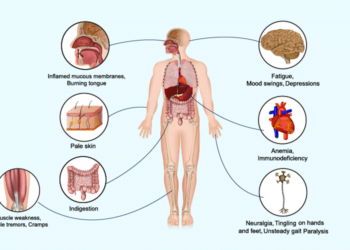
After identifying a technology update, the real work begins.
Continuing on the technology update theme we wrote about last week, we’re revisiting a panel held during the 2019 Faegre Baker Daniels Franchise Summit during which franchise leaders discussed their trials, tribulations and best practices for tech updates.
As is painfully obvious to just about every business owner or franchisee that has taken on a big technology update, the new doodads, gizmos, whatsits and thingamabobs aren’t always a panacea, but following a few steps when making a technology update can at least formalize the process.
The panelists shared a glimpse of the process: John Adams CEO of Grease Monkey International said he’s working through a dramatic shift away from machines to computers on wheels and everything his service concept needs to do to work on them; Susan Rather, co-owner of Brightstar said she’s trying to put more technology guardrails on the home-care and medical-staffing concept while balancing customer service; and Steve White, president of PuroClean U.S. and COO for the company said working with increasingly sophisticated insurers means getting franchisees to do more and more sophisticated operations as well.
Here’s what happens after deciding where to invest those technology dollars.
Test, Test and Test Some More
Obviously that new tech whiz-bang is meant to make the business better by making folks more efficient, get data to the right people, connecting systems or whatever. So making sure it lives up to the promises from the tech sales team is one thing, as is making sure that it doesn’t break at a critical time.
White said they leave plenty of time to make sure it works and addresses the core reasons they bought in before even telling the whole system.
“We only tell the franchisees when we know It will be 90 days. We found that all we did was disappoint ourselves and our franchisees if we jumped the gun. So its just making sure that you know the development cycle,” said White. “Then you go out and test, test, test. The people that we use for the test actually use the software, so pick people that will use the system and try the system, get people that will try to make it break to help you. Then use them to sell it.”
While a company is putting that new technology through its paces, it should also make sure things are secure. Paul Luehr, a partner at Fagre who helps companies figure out cybersecurity, bringing insight from his past life at the Federal trade Commission and the Department of Justice.
For every update, there are serious security ripples that travel through the organization and down to consumers.
“From a legal perspective, I think it’s important to focus on personal information. If there’s a legal hot button issue, it’s not necessarily your overall sales figure, its not necessarily your marketing plan. Where you really end up in legal hot water is if you mishandle personal information,” said Luehr.
He said that testing phase is a great time to ID what data is necessary and what is being collected, especially when it comes to that sensitive personal data.
“One thing I’d encourage you to do is called data mapping, where are you touching personal information?” said Luehr.
Companies also need to think about clean-up, if there is a data breach knowing how to measure the impact and alert the right people should be part of the test. But the time to do it is before it’s deployed, which would seem obvious, but in practice isn’t a universal practice.
“Build a little privacy and cybersecurity into everything you do,” said Luehr. “I can’t tell you how many times I’ve looked at an app after it’s been built. I want to look at that when it’s being built.”
Communicate Relentlessly
The final key to a successful technology change: communication. Transparent, ongoing and tailored communication is invaluable as the new technology working out in the business is likely to touch every facet from the franchisee to mangers and employees. Ideally, it works so well that folks are lining up to get updated, but they do have to know about it first.
“How are we going to talk to every franchisee? Some like videos, some like emails, some like phone calls, some like it at the conference. At the end of the day you have to do about every one of those to get in front of everyone,” said Adams.
At Brightstar, a new system promised to automate a lot of the heavy lifting for caregivers and took some guesswork out of the day-to-day job like geofencing the client’s home so caregivers couldn’t punch in at the Starbucks down the road. But she said one thing really got the system moving.
“One of the most important things we have is an automated incident tracker,” said Rather. “We turn that into marketing to show that we can prevent falls and hospital stays. Finally to get them on board it was how we can use the incident tracking.”
But not everybody read up on the tech update, when the company was switching over, there was a period of downtime that a lot of franchisees glossed right over.
“The update did not have billing for five days,” said Rather, noting that’s not usually a big deal in their long-term billing cycles, but there were some surprises. “I think 40 franchisees called and asked why they can’t do billing? So few people saw that change because they are drinking form the fire hose of information.”
And of course there’s a legal wrinkle in all that communication.
“Make sure you create written communications that tie it to the brand promise, that way you can mitigate issues with joint employer,” said Schnell.
[“source=franchisetimes”]







